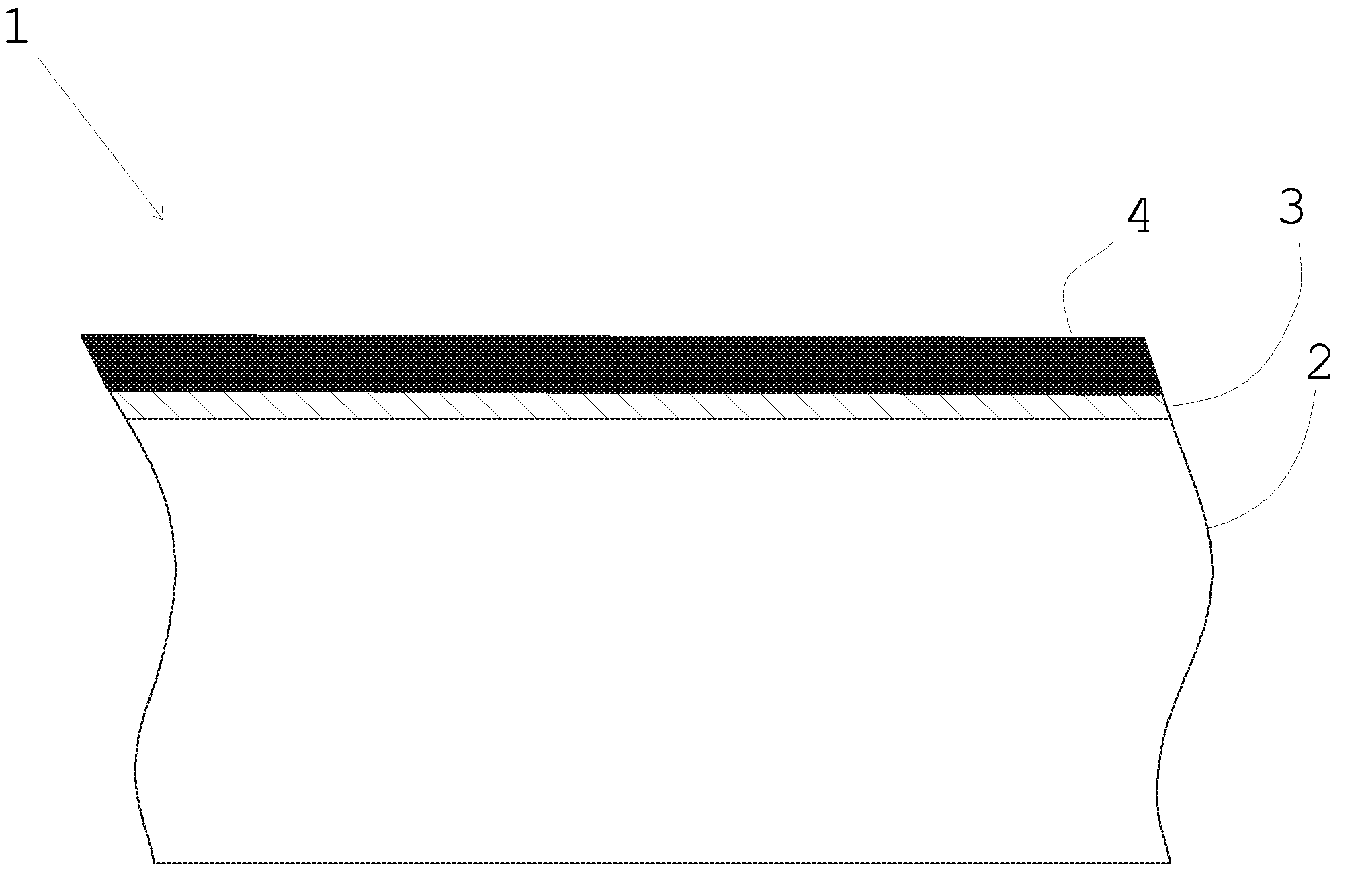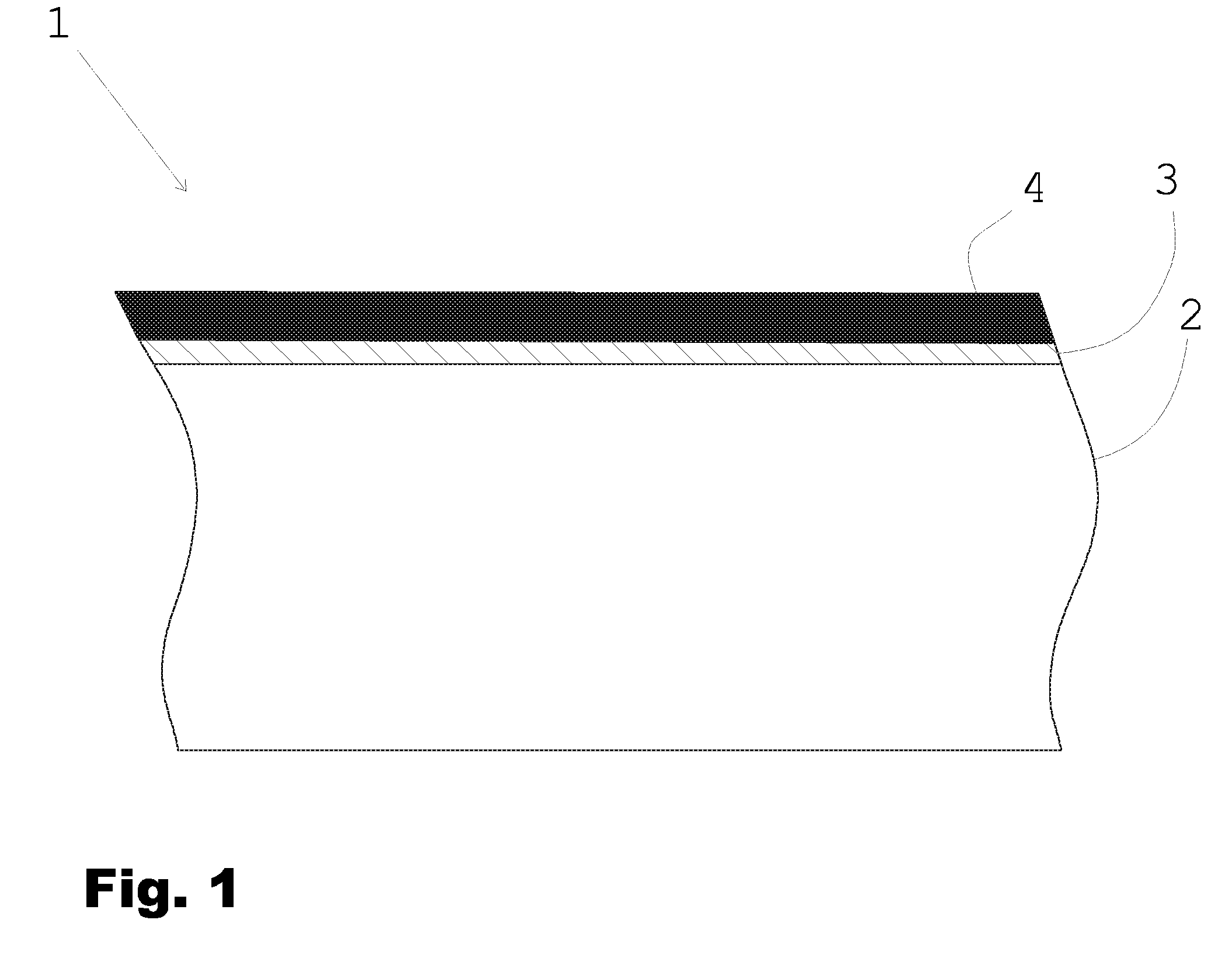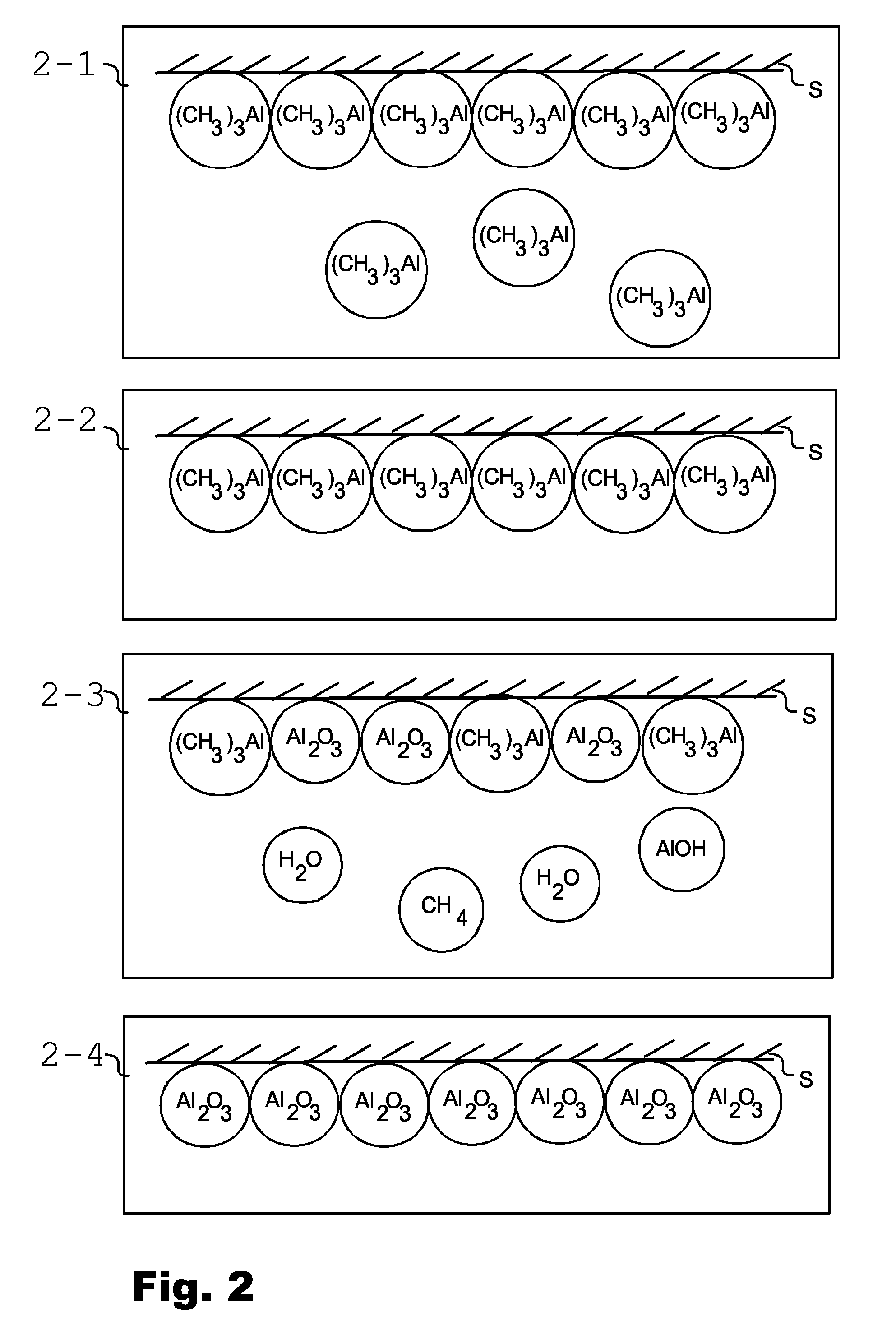Glass product and a method for manufacturing a glass product
a glass product and glass technology, applied in the field of glass products, can solve the problems of deteriorating optical properties, sputtered metal oxide layers, affecting the quality of glass products, etc., and achieves the effects of preventing most interference-induced color effects, reducing the effect of passivation material, and reducing the effect of emissivity
- Summary
- Abstract
- Description
- Claims
- Application Information
AI Technical Summary
Benefits of technology
Problems solved by technology
Method used
Image
Examples
Embodiment Construction
[0038]The glass product 1 of FIG. 1 can be, for example, a glass sheet for a low emissivity window. The glass product comprises a glass substrate 2, a silver layer 3 attached to the glass substrate, and an aluminum oxide layer 4 deposited by ALD on the reflective silver layer. Between the glass substrate 2 and the reflective silver layer 3 there can be an adhesion layer or some other coating layer. The purpose of the silver layer 3 is to reflect at least part of the incident radiation. In the case of a low emissivity window, this means decreasing heat losses from a building by reflecting thermal radiation from the indoors backwards. On the other hand, in a window glass embodiment, the silver layer 3 thickness should be thin enough not to significantly disturb the visible light transmission through the window. The aluminum oxide layer 4 acts as a protection against tarnishing of the silver due to different kinds of corrosion processes. In order to minimize the effect of the aluminum ...
PUM
| Property | Measurement | Unit |
|---|---|---|
| total thickness | aaaaa | aaaaa |
| total thickness | aaaaa | aaaaa |
| total thickness | aaaaa | aaaaa |
Abstract
Description
Claims
Application Information
 Login to View More
Login to View More - R&D
- Intellectual Property
- Life Sciences
- Materials
- Tech Scout
- Unparalleled Data Quality
- Higher Quality Content
- 60% Fewer Hallucinations
Browse by: Latest US Patents, China's latest patents, Technical Efficacy Thesaurus, Application Domain, Technology Topic, Popular Technical Reports.
© 2025 PatSnap. All rights reserved.Legal|Privacy policy|Modern Slavery Act Transparency Statement|Sitemap|About US| Contact US: help@patsnap.com



